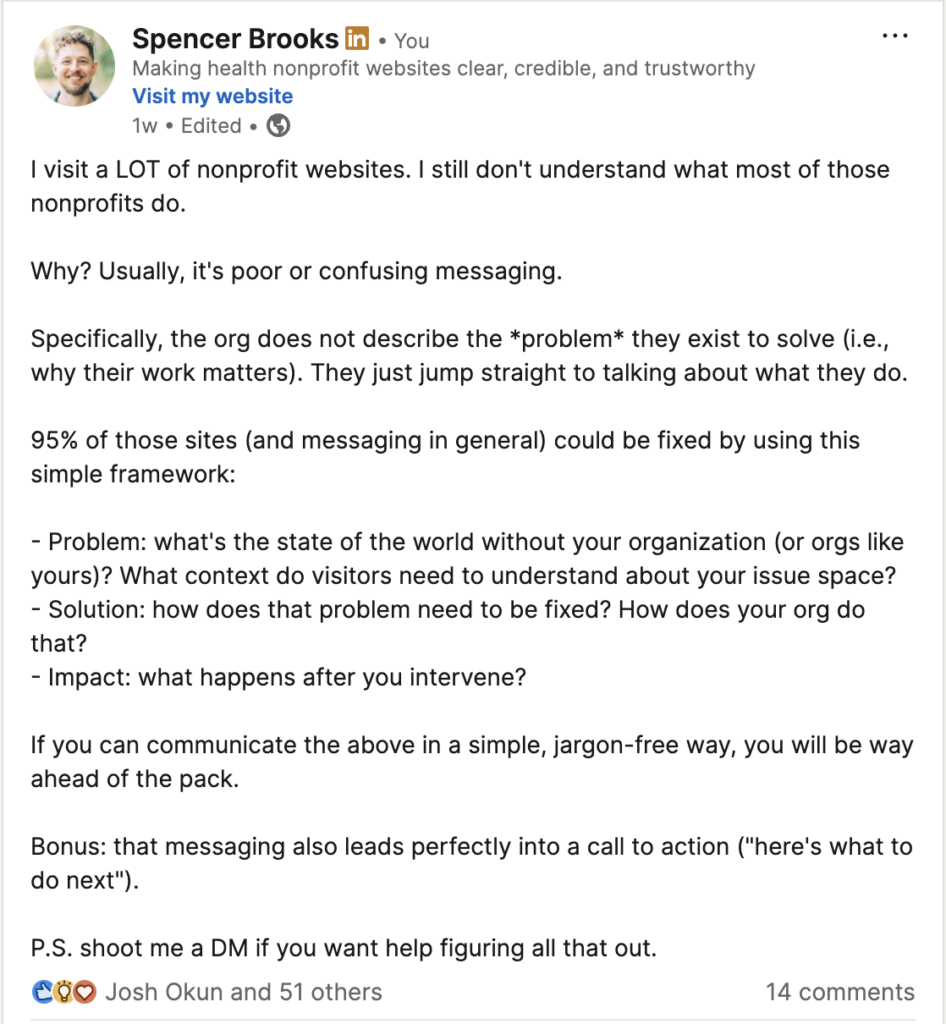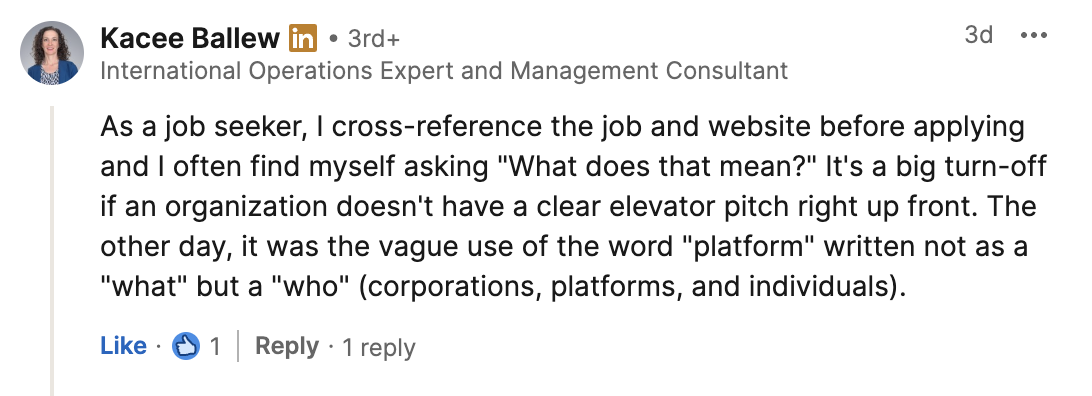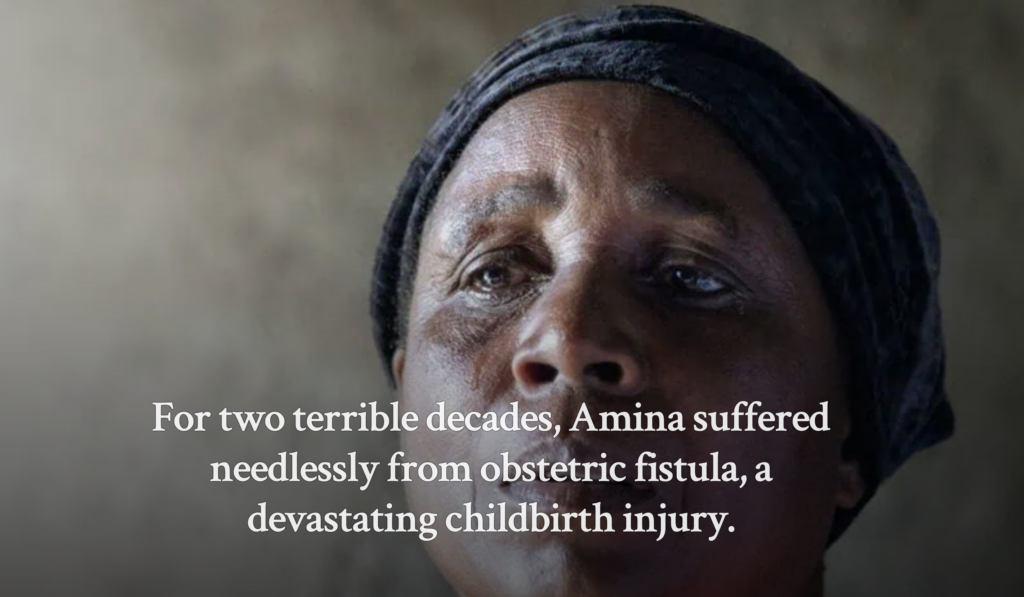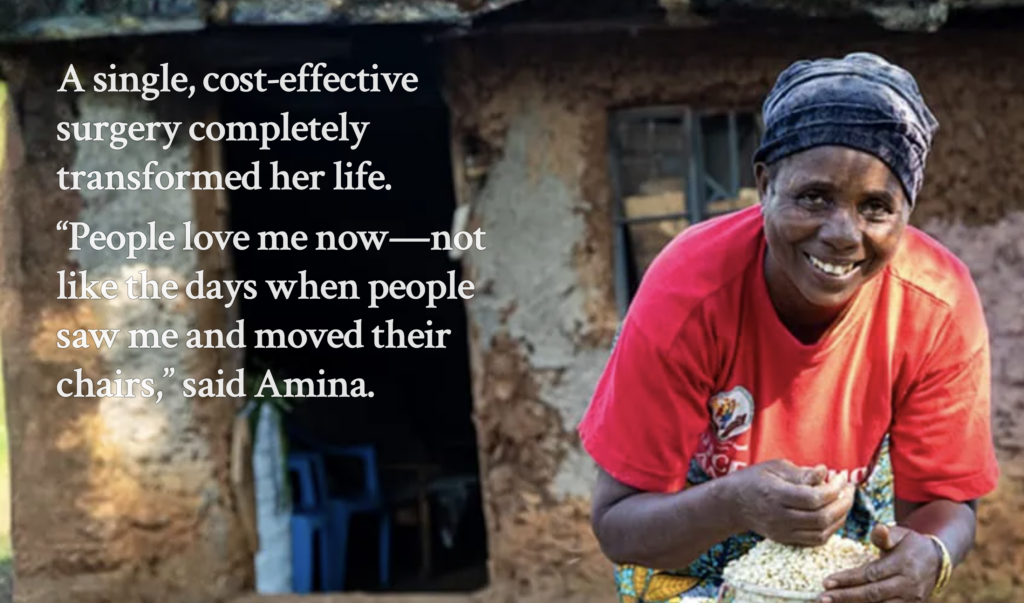Problem, Solution, Impact: The Essential Nonprofit Messaging Framework
Last week, I wrote a LinkedIn post on nonprofit messaging that really seemed to resonate with folks:




In this article, I want to break down that messaging framework in more detail so you can apply it to your website and communications as a whole.
The premise: most of your audience probably doesn’t understand what you do (or why it matters)
Do me a favor: I want you to rewind to when you first joined your organization.
In those first few weeks, as you were meeting your colleagues, they probably explained their work to you in “nuts and bolts” terms.
I’m currently working with a home care agency on their messaging, so let’s use that type of work as an example of what you might hear:
- “I escort clients to community activities so they’re not as isolated”
- “I give them rides to medical appointments or grocery stores”
- “I provide them with laptops so they can access telehealth services”
As these conversations unfold, you begin to see how these activities improve your clients’ quality of life, both in terms of their physical needs as well as the emotional impact your services have on them. You start to develop a nuanced mental picture of how your services intersect with people’s pain, needs, desires, and emotions, and the holistic impact this has on their life.
Over time, you learn that your organization refers to this collection of ideas and concepts as “community support.”
Fast forward two years and you are tasked with describing what you do to the general public on your website and external communications. You sit down with your leadership team and agree that this phrase nicely sums up what you do:
“Through our community support services, we empower individuals and families to build resilience, access resources, and achieve long-term stability.”
You proudly rework your website and communications materials to include this messaging. And you are greeted with positive feedback from your colleagues and board, who are accustomed to using those words and phrases on a daily basis. Everyone feels great.
Your average audience member, however, has little idea what any of this means.
They have none of the mental scaffolding you’ve developed over the years—they may not understand how nonprofits operate, that a “program” is shorthand for the stuff you do, or the nuances of the problems and solutions in your issue space that have become obvious to you.
They see this messaging and go, “huh?”
And if they are persistent enough to visit your About page or annual report to better understand what you do, they are probably greeted with a statement like this:
“Our organization advances systems change by providing holistic, wraparound services and capacity building to empower marginalized populations and foster sustainable community impact.”
There is only one response the average person can have to this: click the “X” button on their browser and move on.
The framework: Problem / Solution / Impact
The messaging they (read: 95% of your stakeholders) need is so radically simple and straightforward that it will feel, to you, like painfully spelling everything out to a middle schooler. And that is exactly how you should think about it.
“We help people stay connected and independent by offering rides to appointments, friendly visits, and connections to local resources like food banks and support groups.”
“We help families experiencing homelessness find stable housing, connect with healthcare and job training, and get the ongoing support they need to thrive. We also work with local leaders to improve policies so families have a stronger safety net for the future.”
This is the kind of stuff you should be aiming for.
But I’m getting ahead of myself. Let’s zoom out and look at a simple messaging framework you can use to quickly and systematically walk audience members into a high-level understanding of what you do.
I drafted this framework after observing a pattern that I saw the most compelling nonprofits using:
- Problem: the state of the world without your organization (why you exist).
- Solution: what you do, in practical terms, to fix that problem.
- Impact: how that changes people’s lives.
The goal of this framework is not to comprehensively describe everything your organization does, or seeks to do. It’s to be clear and specific enough about the essence of your work to get people nodding along and asking to learn more. You want to hook them and then give them clear pathways to take action.
Let’s start at the beginning:
The problem you exist to solve
The biggest messaging mistake you can make is not telling your audience why they should care about your work in the first place.
Most nonprofits are so hell-bent on getting their impact statements in front of people’s eyeballs that they forget to set up any sort of context.
When you start with a clear description of the problem your organization exists to solve, it provides the frame inside which to talk about your work.
Ask yourself:
- What is the state of the world without our organization (or organizations like us)?
- What do people need to understand about the space we operate in?
- What is the essential problem we are solving?
None of this should mention anything about your organization yet. You come in later. First give people a picture of the space inside which you operate.
Here is a practical example:

Example: For two terrible decades, Amina suffered needlessly from obstetric fistula, a devastating childbirth injury. (Fistula Foundation)
The solution to the problem
By describing the problem, you have opened a story loop. Now keep telling that story by sharing how that problem is solved.
If your work is complex, this can come in two movements:
1) What is the solution?
Again, resist the urge to bring your organization into the story at this point. You will enter the story shortly, but tell people, in broad terms, what the solution is without mentioning how your nonprofit provides it.
In the Fistula Foundation’s case, surgery is the solution:

Example: A single, cost-effective surgery completely transformed her life. “People love me now—not like the days when people saw me and moved their chairs,” said Amina. (Fistula Foundation)
2) How do you provide the solution?
At this point in the messaging framework, it should be easy to naturally bridge into how you help. Your programs and activities will directly connect to the problems and solutions you just described.
Using the example we’ve been working through, the Fistula Foundation shares their goal of maximizing the number of surgeries provided:

Example: The goal of our work is to maximize the number of life-transforming surgeries that we can provide to women like Amina. Year after year, we strive to reach and serve women with devastating childbirth injuries on a scale that equals the urgency of their suffering. (Fistula Foundation)
Now, make no mistake: internally, their work is broader than that (and yours will be too). But for the sake of messaging, you must simplify. Notice that people can click the “Learn more” link, which goes into a more detailed explanation of their model.
The impact you create
Now we’re getting to the money-maker. Here’s the place you can finally talk about the impact of your work and share proof and stats.
To be honest, most nonprofits don’t struggle with this too much. You likely have these numbers and statements lying around somewhere—you’ve just been delivering them out of context.

Example: Since 2009, Fistula Foundation has become the global leader in providing treatment for fistula and related conditions. 100,000+ life-transforming surgeries for women in need. 150+ partner hospitals and field organizations supported. 35+ countries served in Africa and Asia. (Fistula Foundation)
Putting it all together
When you stitch all this together, you get a concise, easy-to-understand story that naturally invites someone to keep exploring:
For two terrible decades, Amina suffered needlessly from obstetric fistula, a devastating childbirth injury.
A single, cost-effective surgery completely transformed her life. “People love me now—not like the days when people saw me and moved their chairs,” said Amina.
The goal of our work is to maximize the number of life-transforming surgeries that we can provide to women like Amina. Year after year, we strive to reach and serve women with devastating childbirth injuries on a scale that equals the urgency of their suffering.
Since 2009, Fistula Foundation has become the global leader in providing treatment for fistula and related conditions.
- 100,000+ life-transforming surgeries for women in need
- 150+ partner hospitals and field organizations supported
- 35+ countries served in Africa and Asia.
Notice this is not long or dense. A middle schooler could understand this. And you better believe a prospective donor or partner can, too.
From here, your job is simple: suggest appropriate next steps. On a website, that might be learning more about your work (for example, something like an About page on your site), or giving them a link to your programs or giving page.
You’ve piqued their interest, now give them a pathway to continue engaging with your organization.
Why is this so hard?
If all this seems radically simple, it’s because it is. In fact, the entire goal of this framework is to communicate your work in the simplest, easiest terms possible.
The reason this is so hard is you’re steeped in the details of your work, your internal language, your mental frameworks. It’s very, very hard to just “forget” all this for a second and objectively evaluate your communications, messaging, website, etc., from the perspective of someone who knows virtually nothing about you.
To get around this challenge, you have a few options:
- Capitalize on a new hire. If you have someone new joining your comms team, task them with describing your work in layman’s terms. They have a window of objectivity that will slowly fade—make use of it.
- Perform audience research and testing. Get on Zoom calls with audience members and have them read your messaging silently. Ask them questions about what they read: what did they take away? Where did they need to re-read? Where did the story gain or lose momentum? Their insights will reveal your blind spots.
- Hire an outside consultant. The quickest shortcut to simplified messaging is get someone outside your organization to do it. One of the reasons we get hired is to bring in an outside perspective on a nonprofit’s work, facilitate the research sessions to ensure the messaging is rooted in audience feedback, and apply that messaging strategy to their website.
- Use AI (with an abundance of caution). Listen, don’t ask ChatGPT to write your messaging. But if you are struggling to find a different phrase than “community support,” AI can help you brainstorm options or give you eighth-grade equivalents to ideas you’re having trouble simplifying.
Here’s the bottom line: confusion is the #1 enemy of engagement. If your messaging is confusing, people will lose interest before you have a chance to tell them more.
Give them the problem, the solution, and your impact. Chances are, they’ll stick around to learn more.


